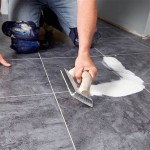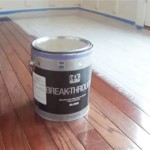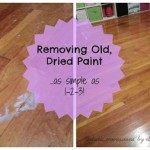Vinyl vs. Laminate Flooring: Which Is Better?
Choosing the right flooring for your home can be a daunting task, with countless options vying for your attention. Two popular contenders in the flooring market are vinyl and laminate, both offering durability, affordability, and stylish aesthetics. While they share some similarities, understanding their distinct characteristics and comparing their pros and cons can help you make an informed decision tailored to your needs and preferences.
Durability and Wear Resistance
Durability is a critical factor to consider when choosing flooring, especially in high-traffic areas. Vinyl flooring boasts exceptional durability, thanks to its resilient core and protective wear layer. It can withstand heavy foot traffic, scratches, dents, and moisture, making it an excellent choice for kitchens, bathrooms, and entryways. Laminate flooring, while durable, tends to be slightly less resistant to scratches and dents compared to vinyl. However, advancements in laminate technology have resulted in highly durable options with scratch-resistant coatings. Ultimately, the level of durability depends on the specific product and its wear layer thickness. Selecting a high-quality laminate with a thicker wear layer can provide comparable durability to vinyl in most cases.
Water Resistance and Moisture Tolerance
Water resistance is a key consideration, particularly for areas like bathrooms and kitchens prone to spills and moisture. Vinyl flooring excels in this regard, offering excellent water resistance and moisture tolerance. Its waterproof core prevents water damage, making it ideal for wet environments. While some laminate flooring options are water-resistant, they are not entirely waterproof. If you're considering laminate for a bathroom or kitchen, choose a specifically designed water-resistant option. However, even with water-resistant laminate, prolonged exposure to standing water can lead to damage. Therefore, vinyl flooring remains the superior choice for areas where water exposure is a concern.
Installation and Cost
Installation costs and ease of installation are crucial factors to consider. Vinyl flooring offers a more straightforward and user-friendly installation process. Many vinyl varieties come in click-lock systems, allowing for a DIY-friendly installation with minimal tools and expertise. Some vinyl options are also readily available in peel-and-stick tiles, further simplifying the installation process. Laminate flooring installation typically requires a bit more experience and specialized tools. While some laminate floors also feature click-lock systems, they can be more complex to install compared to vinyl. In terms of cost, vinyl flooring is generally more affordable than laminate, especially when considering the installation cost.
Aesthetics and Design Options
Aesthetic appeal is a fundamental aspect of flooring selection, as it significantly influences the overall ambiance of a space. Both vinyl and laminate flooring offer a wide array of design options to complement various styles. Vinyl flooring comes in a vast selection of patterns, colors, and textures, mimicking various materials like wood, tile, and stone. Laminate flooring also boasts an impressive range of designs, including realistic wood grain patterns, intricate tile patterns, and contemporary abstract designs. The choice ultimately depends on the desired aesthetic and the overall design theme of the space.
Comfort and Underfoot Feel
Comfort and underfoot feel are often overlooked factors when choosing flooring, but they can significantly impact daily life. Vinyl flooring is generally known for its comfort and warmth underfoot. Many vinyl options feature a cushioned backing that provides added comfort and reduces noise levels. Laminate flooring, however, can feel harder and colder underfoot, especially in rooms without adequate underlayment. However, some laminate products are designed to mimic the softness and warmth of real wood, offering a more comfortable experience. Ultimately, considering your individual preferences and the specific product features is crucial when evaluating comfort and underfoot feel.
Cleaning and Maintenance
Ease of cleaning and maintenance is a practical consideration for any flooring choice. Both vinyl and laminate flooring are relatively easy to clean and maintain. They typically require regular sweeping or vacuuming to remove dirt and debris. Spills can be easily wiped up with a damp cloth. However, vinyl flooring generally requires less maintenance as it is more resistant to stains and scratches. It is also less susceptible to damage from harsh cleaning chemicals. Both flooring types can be mopped with a mild cleaning solution, but it is important to refer to the manufacturer's instructions for specific cleaning recommendations.
The decision between vinyl and laminate flooring comes down to individual needs and preferences. Both options offer a range of benefits and drawbacks, and the best choice depends on factors such as durability, water resistance, installation, cost, aesthetics, comfort, and maintenance. Carefully considering these factors will guide you towards the flooring solution that best suits your home and lifestyle.

Vinyl Flooring Vs Laminated Which Is The Better Choice Lamiwood Designer Floors

Vinyl Vs Laminate Flooring Which One Should You Use Easiklip Floors

Laminate Vs Vinyl The Home

Luxury Vinyl Plank Vs Laminate What S The Difference

Vinyl Plank Vs Laminate Flooring Which Is Right For You Onflooring

This Or That Laminate Vs Vinyl Ben Laube Homes

Vinyl Vs Laminate Flooring Which Is Best Carpet Decor

Vinyl Vs Laminate Linoleum Which Is The Best Flooring Wood And Beyond Blog

Laminate Vinyl Flooring In Portland Or

Laminate Vs Vinyl Flooring Guide
See Also







